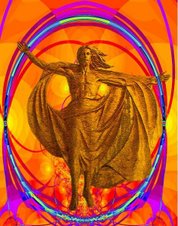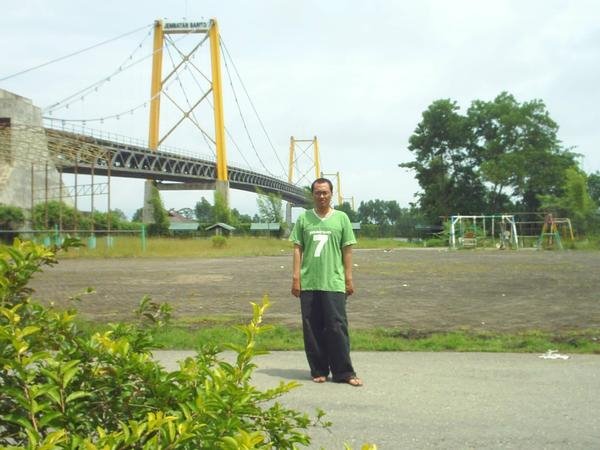Friday, April 27, 2012
Japanese bondage
From Wikipedia, the free encyclopedia
Jump to: navigation, search
This article is about consensual sexual bondage. For other uses, see Slavery in Japan.
Kinbaku (???) means 'tight binding Kinbaku-bi (????) which literally means 'the beauty of tight binding'. Kinbaku (also Sokubaku, bakujojutsu, and senyojo jutsu) is a Japanese style of bondage or BDSM which involves tying up the bottom using simple yet visually intricate patterns, usually with several pieces of thin rope–often jute and generally around 6 mm in diameter, but sometimes as small as 4mm, and between 7m-8m long). In Japanese, this rope is known as 'asanawa'. The Japanese vocabulary does not make a distinction between hemp and jute. Dictionaries will usually translate the word 'asa' as hemp and 'nawa' as rope.[1][2][3] However, this rope is not hemp rope, but jute rope: the allusion is to the use of hemp rope for restraining prisoners, as a symbol of power.[4] In Japan very few bondage practitioners, if any, use hemp rope. Though jute and hemp may belong to the same family of fibers, and they both have good properties for holding knots and for not stretching, they do differ in looks, weight and especially in smell.[citation needed]
The word shibari came into common use in the West at some point in the 1990s to describe the bondage art Kinbaku. Shibari (???) is a Japanese word that literally means "to tie" or "to bind". It is used in Japan to describe the artful use of twine to tie objects or packages.
Contents
[hide]
* 1 Differences between Western and Japanese styles
* 2 History
* 3 Technique
* 4 Glossary
* 5 Kinbaku patterns (most of the below have multiple variations)
* 6 Topics
* 7 See also
* 8 References
* 9 Further reading
* 10 External links
[edit] Differences between Western and Japanese styles
The aesthetics of the bound person's position is important: in particular, Japanese bondage is distinguished by its use of specific katas (forms) and aesthetic rules. Sometimes, asymmetric and often intentionally uncomfortable positions are employed, often giving choice of two 'evils' (two uncomfortable positions to choose between by moving in the ropes) to heighten the psychological impact of the bondage. In particular, Japanese bondage is very much about the way the rope is applied and the pleasure is more in the journey than the destination. In this way the rope becomes an extension of the tiers hands and is used to communicate.
Traditional Japanese bondage techniques use natural vegetable fiber rope (hemp, jute, or linen) exclusively, though contemporary Japanese Masters have been working with synthetic fiber rope. The natural fibers easily lock to each other which means the bondage can be held together by the friction of twists and turns or very simple knots. Traditionally, multiple 7-8 meter lengths are used.
Western styles use natural fiber (though often dyed for aesthetic color variation) or synthetic fiber ropes, which have become integrated over the years. Cotton was used early on, then nylon became popular in the 1980s or 1990s, followed by multi-filament polypropylene (MFP) ropes. The variety offers a choice of different textures and skin sensations, though knot choices become more complex because of the slippery nature of synthetic ropes. Western full-body bondage tends to use a variety of lengths and often very complex decorative knots.
Kinbaku, with its roots firmly in Japan, has gained popularity across the world. Kinbaku implies "kokoro"; heart, spirit, mind and cannot be reached by skills of ropes/knots alone.[citation needed]
[edit] History
Shibari art.
According to several sources,[5] bondage as a sexual activity first came to notice in Japan in the late Edo period. Generally recognized as "father of Kinbaku" is Seiu Ito, who started studying and researching Hojojutsu in 1908 and turned it into an art form. Kinbaku became widely popular in Japan in the 1950s through magazines such as Kitan Club, which published the first naked bondage photographs. In the 1960s, Eikechi Osada brought performance bondage to the public eye.
In recent years, Kinbaku has become popular in the Western BDSM scene in its own right and has also profoundly influenced bondage, combining to produce many 'fusion' styles.
[edit] Technique
Kinbaku is based on fairly specific rope patterns, most of them derived from Hojojutsu ties. Of particular importance are the Ushiro Takatekote (a type of arm box tie), which forms the basis of most Kinbaku ties, and the Ebi, or "Shrimp", which was originally designed as a torture tie but today makes the subject vulnerable for more pleasant forms of play.
Hojojutsu uses rope in varying lengths. The hon-nawa came in lengths of 13, 11, 9, 7, and 5 fathoms. The hayanawa was 2 and a half fathoms. The length of the kaginawa was not fixed. The length of one kaginawa in Nawa's collection is given as 13 shaku; a shaku is almost exactly one English foot. The ropes came in four colors, the significance of which changed over time.
Generally speaking, Kinbaku is practiced with ropes of 7–8 meters (23 ft) in length. Due to the generally different physique of Western subjects, 8 meter (26 ft) ropes are commonly used in the West. The rope material is usually hemp (but sometimes sisal or jute), prepared according to specific techniques to achieve a pleasantly soft yet sturdy rope. Other materials are also sometimes used, although the use of most synthetic ropes tends to be frowned upon by Western tiers.
For historic reasons, earlier forms (Ryu) of Kinbaku use very few knots, sometimes none at all, or only a cow hitch or an overhand knot. According to Sensei Nawa Yumio in his 1964 classic book on Torinawa, knots on a person was regarded as extremely disgraceful, something some would regard as worse than death. Restraints with no knots were not considered "bondage" and there was no shame in such; therefore, "wrappings" were used.
[edit] Glossary
* kinbaku (???): (noun) literally 'tight binding'. It does not convey the meaning of sexual bondage outside SM circles. However, some experts, e.g. Kinoko Hajime and Osada Steve, make a distinction from 'shibari' in that it is used to refer to sessions with a strong emotional exchange.
* kinbakushi (????): (noun) kinbaku master, can be shortened to bakushi.
* shibari (???): (adverb) the act of tying, binding or weaving. It does not convey the meaning of sexual bondage outside SM circles.
* shibaru (???): (verb) tie or bind with a rope
* nawa shibari (????): (noun) rope-tying with a rope (an incorrect, "made-up" term, does not exist in Japanese [1])
* nawashi (???): (noun) literally,"a maker of rope", but in SM circles it means a professional "rope artist" (source Master K's book "Shibari, The art of Japanese Bondage")
[edit] Kinbaku patterns (most of the below have multiple variations)
* Single wrist binding ????? Katate kubi shibari
* Both wrists binding ????? Ryoute kubi shibari
* Handcuff binding ???? Tejou shibari
* Prisoner handcuff binding ?????? Renkou tejou shibari
* Hands behind the back binding ????? Ushiro te shibari
* High hands behind the back binding ????????(??? Ushiro takate kote shibari)
* Hands behind the head tie ??????? Koutou ushiro te shibari
* Tasuki (kimono string) tied ?(???)?? Tasuki ( tasuki ) shibari
* Crotch rope tie ????? Mata nawa shibari
* Turtle (diamond pattern) binding ????(????)Kikkou shibari ( hishi nawa shibari)
* Upright standing binding ???????? Chokuritsu fudou ippon shibari
* Cross-legged binding ?? ?? Agura shibari
* Shrimp binding ???? Ebi shibari
* Reverse shrimp binding ?????? Sakasa ebi shibari
* Standing partial suspension ?????? Tachi tsuri shibari
* One foot lifted partial suspension ????????1 Kataashi age tsuri shibari
* Hanging letter M, open leg binding M??????? M ji kaikyaku tsuri shibari
* Reverse hanging shrimp binding ??????? Gyaku ebi tsuri shibari
[edit] Topics
French Shibari
Topics in Japanese bondage include:
* Karada Japanese word used in the West for body (body harness, a "rope dress")
* Ushiro Takate Kote Foundational form for most shibari ties, capturing the upper body / breasts and arms behind back (when ushiro) in a "U" shape behind the back
* Kikkou - A body tie that ends with a tortoise shell design in the front upper torso.
* Hishi A tie using diamond shapes. When done as a full body tie, it is sometimes also called hishi-kikkou. The hishi has been popularized by manga, or cartoon, art.
* Ebi The "shrimp" tie
* Agoura a less severe tie similar to an ebi
* Tazuki "criss-cross harness"
* Tanuki "racoon dog"
* Kataashi tsuri "one-legged suspension"
* Asymmetric bondage, a common feature of Japanese bondage
* Tsuri suspension
* Gyaku ebi
* Hojojutsu
Subscribe to:
Post Comments (Atom)







No comments:
Post a Comment